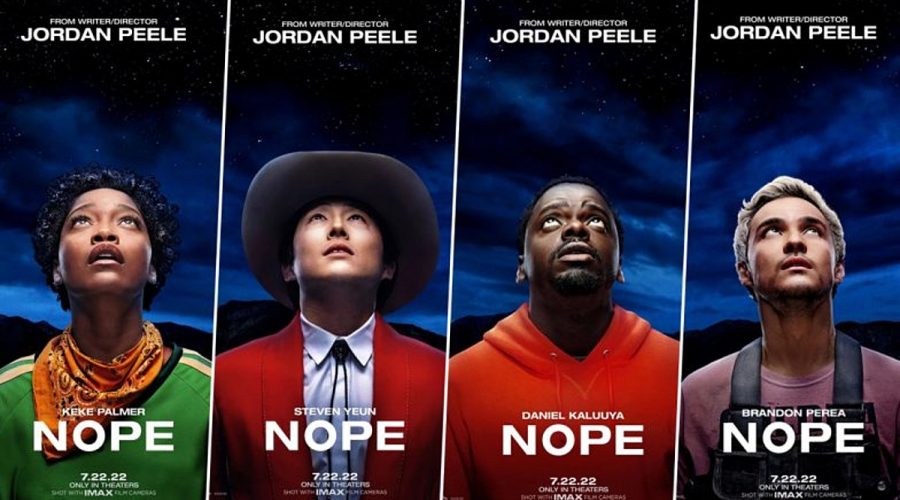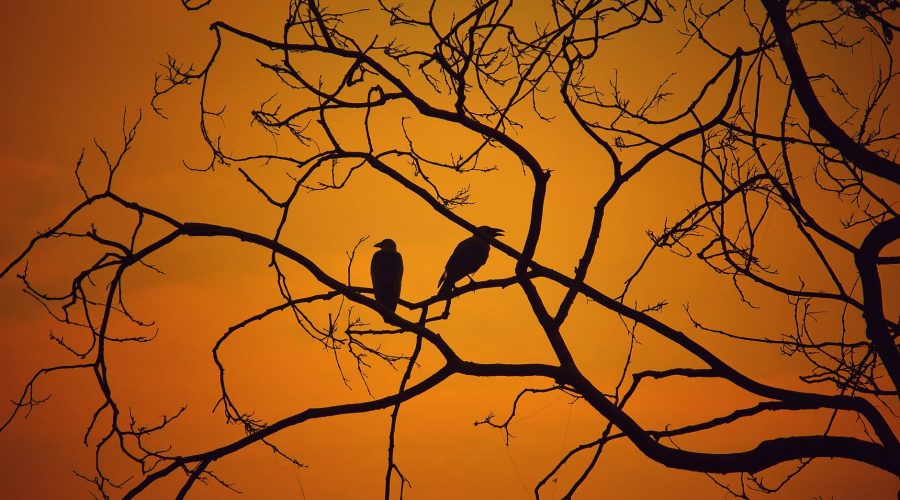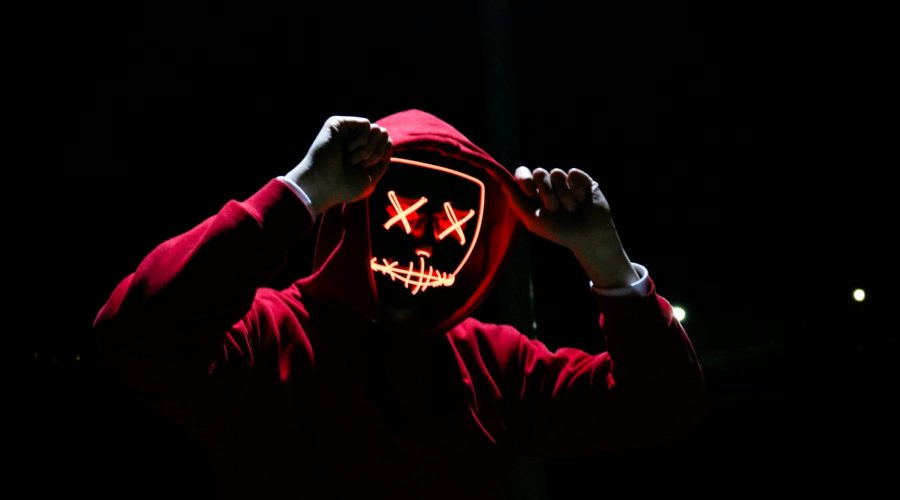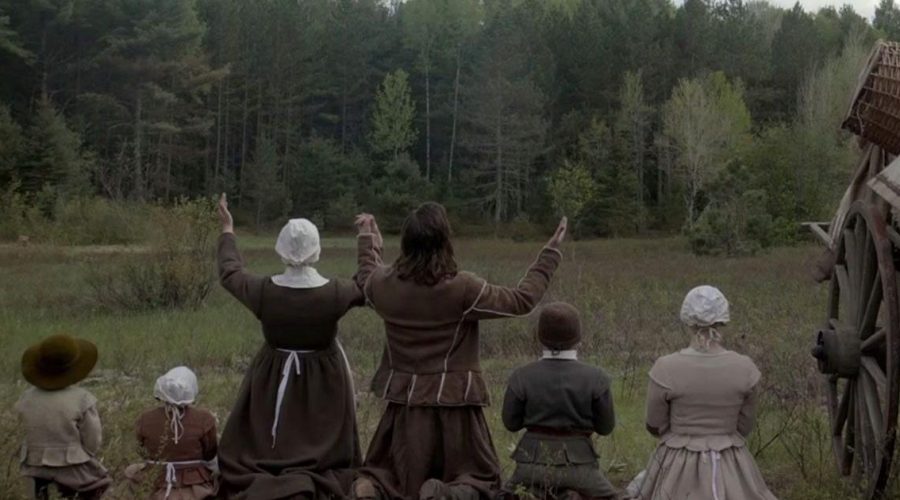THE B STORY IS STRONGER – A NOPE REVIEW
There’s something in the sky. Is it a bird? Is it a plane? No, it’s…does it matter? This is the question that horror aficionado, Jordan Peele, asks the audience in his latest sci-fi/horror installment, NOPE aka Not Of Planet Earth. The two-hour and eleven-minute movie centers around brother and sister OJ Haywood (Daniel Kaluuya) and Emerald Haywood (Keke Palmer). After the mysterious death of their beloved father, Otis Haywood Sr. (Keith David), the Haywood siblings are left with the impossible responsibility of keeping up their family business – Haywood’s Hollywood Horses. After witnessing what they believe is a UAP [ Unexplained Ariel Phonmonon] OJ and Emerald make a plan to capture the object in what they describe as an “Oprah Shot” meaning a clip of the object so good it will certainly capture them an interview with the media mogul herself. In short, if Haywoods can get the money shot of this “alien” they can pay back the farm’s debt and restore the family’s name to fame. Sounds easy in theory, right? Well, this wouldn’t be a true Peele film if that were the case.
Without revealing the rest of the plot, things quickly go south as the Haywood siblings try to achieve their goal. At the same time, we’re introduced to the B story following a former child-star turned amusement park owner, Ricky “Jupe” Park, played perfectly by the engaging as hell Steven Yuen. The film actually opens with a haunting scene involving a chimp, Gordy, which we later find out ties into Jupe’s story. We see this history unfold in a series of flashbacks, which in my opinion, is the strongest storyline in this film. I could have watched two more hours about what happened to Gordy – which isn’t exactly what you want in a movie centered on aliens. But the Gordy connection is important to the overall theme of NOPE – the dangers of society’s obsession with spectacles. This theme is threaded throughout the film, especially in this Gordy chapter. We, the audience, are riveted by danger, disaster, and despair. The more gruesome the better. We consume it, package it, and then sell it for money. The alien that the Haywoods are trying to capture on film is a spectacle – something they can make money from. Gordy’s deadly history is a spectacle, something Jupe’s still making money from. Where is the line between morbid curiosity and exploitation? That’s what Peele wants to know.
Overall, I think NOPE is a huge swing with a brilliant undercurrent of theme, heart, and terror. The first two acts as a whole are very strong. Peele takes his time to set our table, introducing us to a group of versatile characters that we immediately care about. In particular, Palmer stands out as just so damn likable. It’s easy to root for her and she brings a much-needed lightness to the story. Another performance highlight is newcomer, Brandon Perea, who plays Fry’s techie, Angel Torres. If you’re a Burbank native you’ll remember Fry’s Electronics as the mega store with – you guessed it – a giant UFO on its roof. Brilliant. Sadly, Fry’s shut down during the pandemic, which seems to be an unfortunate and ironic metaphor for NOPE’s third act.
This is where the film unravels for me, just like Peele’s last horror effort 2019’s US. Look, third acts are hard! I get it. But there’s something frustrating about watching two hours of setup just not deliver in the end. Mixed with some odd editing decisions, the last act of NOPE is overstuffed with confusing action that leaves this very strong ensemble cast essentially separated for the rest of the movie. If there’s one thing I noticed about Peele it’s this – he sets up the rules of his world, but quite often doesn’t follow them. For example, in this film, whenever the alien is around all electronics shut down. It happens numerous times in the first two acts, but suddenly in the third act, it only happens in a certain radius or only applies to certain electronics. Sometimes the cars won’t start at all and sometimes they have just enough juice to play a creepy slowed-down version of Corey Hart’s “Sunglasses at Night.” Why? I have no idea.
The other area of the film that didn’t quite land with me is the actual visual of the alien. I don’t wish to speculate about what happened here, nor do I intend to rag on the special effects artists, but the reveal of the alien both felt too early and too late. In a very Jaws-eque move, the alien also becomes bigger by the end of the film – but not in the way you would think. The actual design of the creature resembles more of a parachute than an alien animal, a fact that was quickly (somehow) discovered by OJ early in act two. It’s such a minute critique on my end, but as a horror fan, something I can’t ignore. Also, the design of the creature reminded me of another alien film that, frankly, does it better, 2017’s Life. Outside of that, what I will say is that NOPE is Peele’s greatest achievement technically. The cinematography is insanely gorgeous and the score is perfection. My only wish is that the story itself matched the visuals on screen.
In the end, I definitely want to see NOPE again. What I love about seeing a Peele film is peeling back the layers behind them. It can take up to five or six watches to find all the hidden easter eggs. I, for one, wouldn’t mind seeing an all-Gordy horror prequel either. For a B story, it’s still the chapter that sticks out to me the most when thinking back on the film and provided the most horror. Overall, NOPE is a seven out of ten. A huge swing, with great performances, expert technicality, and a pretty darn fun movie. With three features under his belt, it’s safe to say Jordan Peele isn’t going anywhere anytime soon, and thank God for that!










Recent Comments